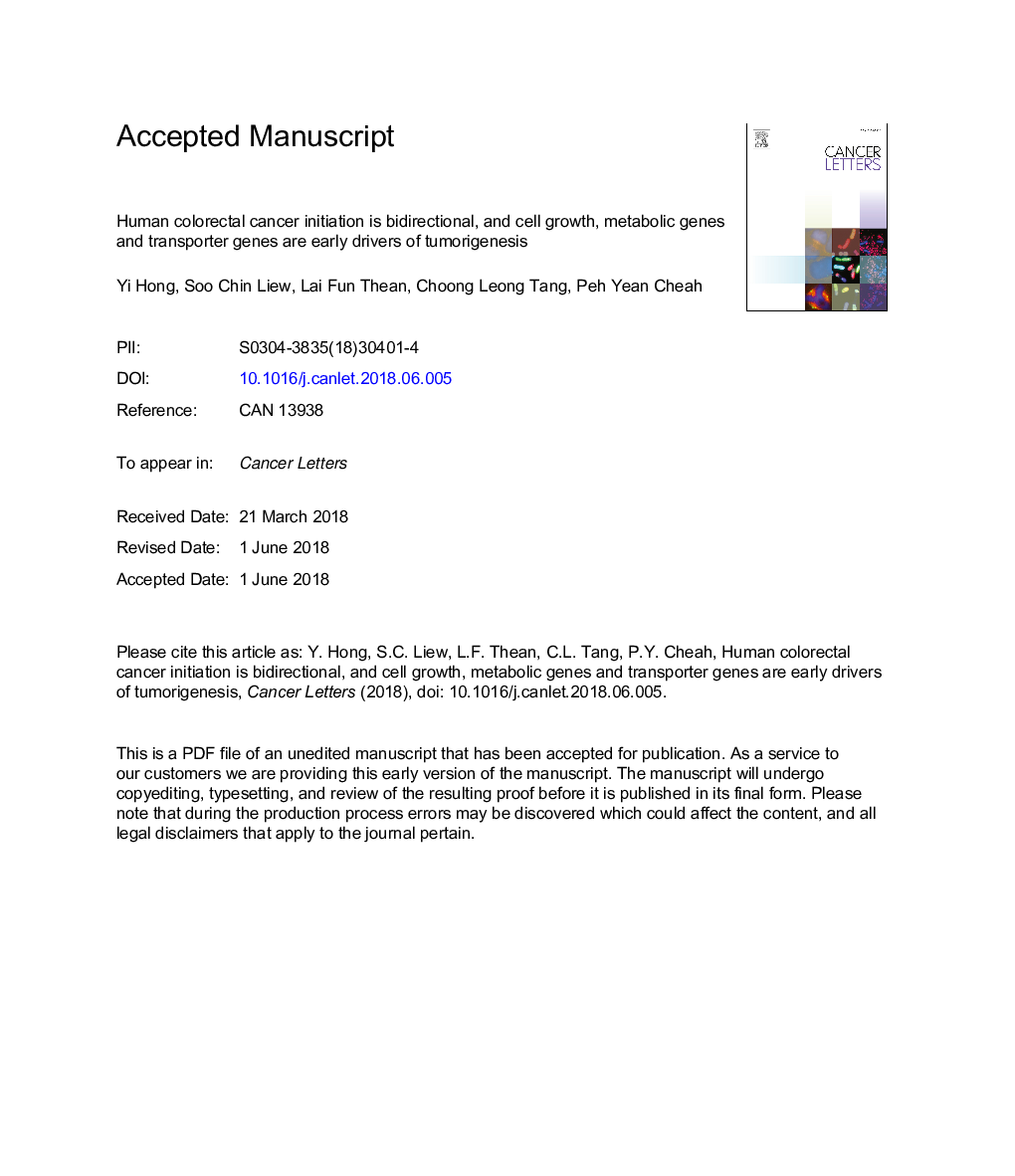| Article ID | Journal | Published Year | Pages | File Type |
|---|---|---|---|---|
| 8434263 | Cancer Letters | 2018 | 26 Pages |
Abstract
The role of stem cells in the development of solid tumors remains controversial. In colorectal cancers (CRC), this is complicated by the conflicting “top-down” or “bottom-up” hypotheses of cancer initiation. We profiled the expressions of genes from the top (T) and bottom (B) crypt fractions of normal-appearing human colonic mucosa (M) at least 20â¯cm away from the tumor as a baseline and compared this to the genes of matched mucosa adjacent to tumors (MT) in twenty-three sporadic CRC patients. In thirteen patients, the genetic distance (M-MT) between the B fractions is smaller than the distance between the T fractions, indicating that the expressions diverge further in the top fractions (Bâ¯<â¯T). In the remaining patients, the reverse effect is observed (Bâ¯>â¯T). Assuming that a greater genetic divergence in the top or bottom fractions indicates that position as the initiation site, it is thus equally likely that human CRC initiates from 'top-down' via de-differentiated colonocytes or 'bottom-up' via dysregulated intestinal stem cells. Dysregulated genes that persist until tumor stage are not limited to tumor suppressors or oncogenes but include metabolic and transporter genes such as CA7, PHLPP2, and AQP8.
Keywords
Related Topics
Life Sciences
Biochemistry, Genetics and Molecular Biology
Cancer Research
Authors
Yi Hong, Soo Chin Liew, Lai Fun Thean, Choong Leong Tang, Peh Yean Cheah,
